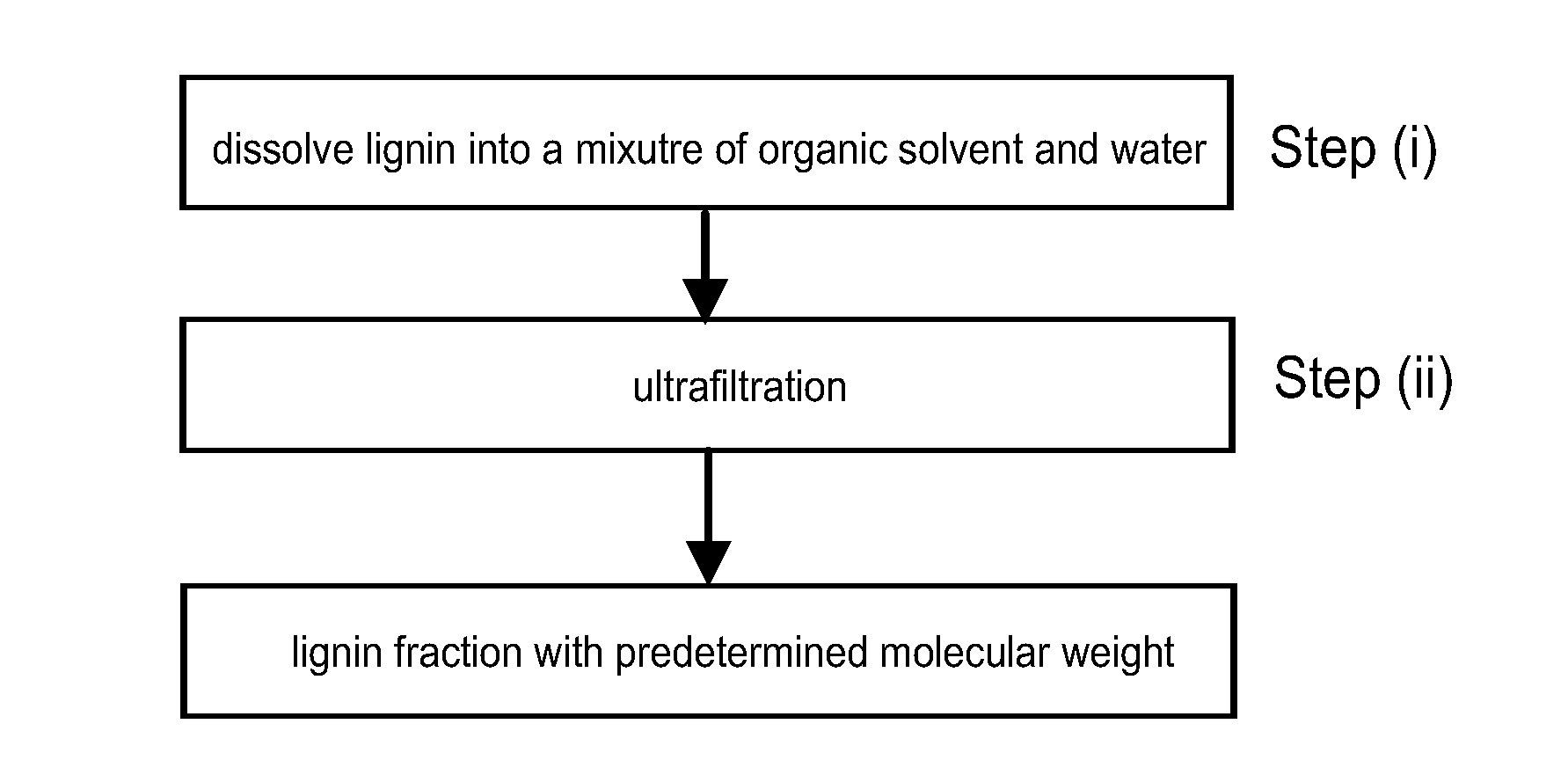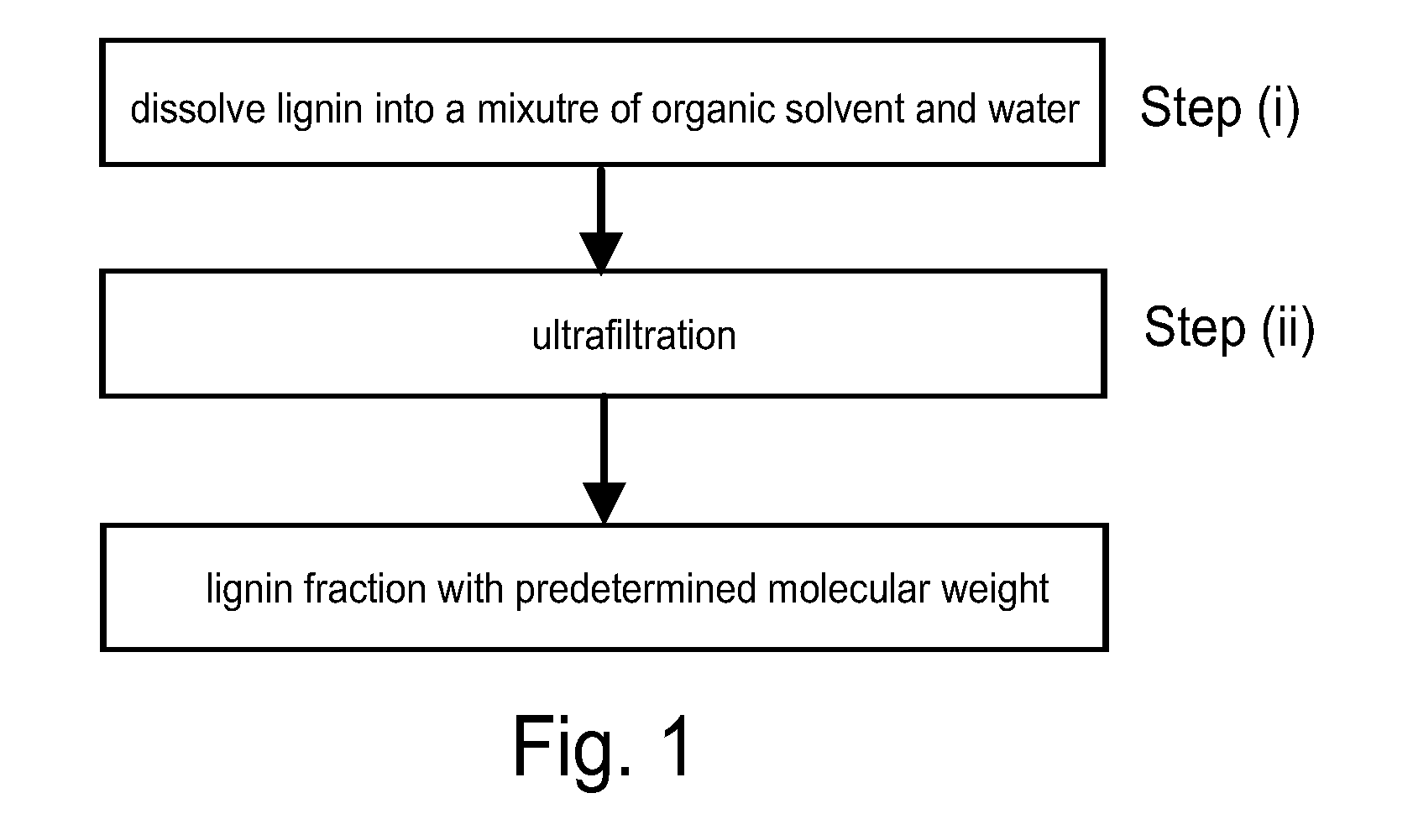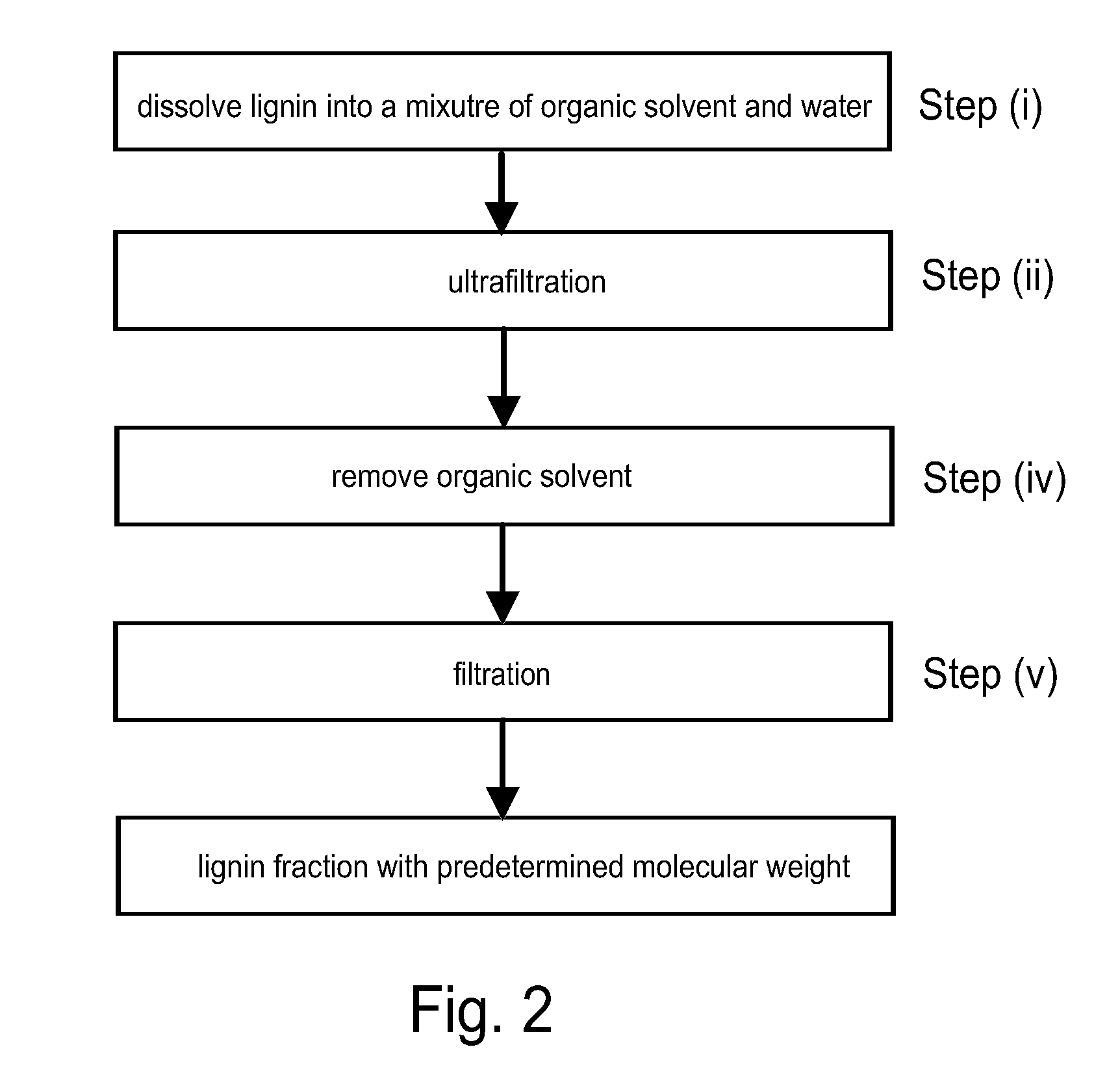Method for fractionating lignin
a technology of fractionation method and lignin, which is applied in the direction of lignin adhesive type, fibre chemical features, adhesive types, etc., can solve the problems of increasing the ash content of the lignin solution, needing diafiltration, and increasing the cost of the procedure for fractionating lignin
- Summary
- Abstract
- Description
- Claims
- Application Information
AI Technical Summary
Benefits of technology
Problems solved by technology
Method used
Image
Examples
example 1
Fractionating Lignin
[0079]In this example lignin was fractionated in accordance with the embodiment presented in FIG. 2. The following components and their amounts were used:
amount (kg)water50acetone50lignin10
[0080]Firstly, a mixture containing acetone and water was formed such that the acetone concentration was weight-%. The lignin was then dissolved into the mixture having a temperature of 60° C. 98% of the lignin was dissolved into the mixture containing acetone and water.
[0081]Then, the formed mixture was ultrafiltrated by feeding the mixture through three successive ceramic membranes having cut-off values of 50 kDa, 15 kDa and 5 kDa, respectively, in a manner as illustrated in FIG. 4. The membranes having cut-off values of 50 kDa and 5 kDa were Tami Industries' Filtanium™ membranes and the membrane having a cut-off value of 15 kDa was an Inside CéRAM™ ceramic membrane. Evaporation of the acetone during the filtration procedure was prevented by sealing the filtration equipment. ...
example 2
Producing Ash Free Lignin Fractions
[0085]In this example ash free lignin fractions were produced in accordance with the embodiment presented in FIG. 3. The following components and their amounts were used:
amount (kg)water25ethanol75lignin10
[0086]Firstly, a mixture containing ethanol and water was formed such that the ethanol concentration was weight-%. The lignin was then dissolved into the mixture having a temperature of 65° C. 98% of the lignin was dissolved into the mixture containing ethanol and water.
[0087]Then, the formed mixture was ultrafiltrated by feeding the mixture through two successive polymeric membranes having the following cut-off values: 100 kDa, and 30 kDa. The ultrafiltration was performed with polymeric membranes purchased from Microdyn Nadir. Evaporation of the ethanol during the filtration procedure was prevented by sealing the filtration equipment. The ethanol that despite sealing the equipment was still being evaporated was refluxed such that an increase in ...
example 3
The Use of Different Lignin Fractions in the Production of a Binder Composition
[0092]In this example a binder composition was produced using the lignin fractionated in accordance with example 1. The following components and their amounts were used:
amount concentration (g)water179NaOH-I50%102HMW-lignin fraction97%146LMW-lignin fraction97%72phenol (polymerizable substance)90%123formaldehyde (crosslinkingagent)40%370NaOH-II50%51
[0093]The HMW-lignin fraction (high molecular weight lignin fraction) comprised lignin from the concentrate from the 50 kDa membrane of the ultrafiltration step. The LMW-lignin fraction (low molecular weight lignin fraction) comprised lignin from the permeate of the 5 kDa membrane of the ultrafiltration step.
[0094]Firstly, water, the first part of NaOH (NaOH-I) and HMW-lignin were mixed under heating such that a dispersion was formed. Then the temperature was adjusted to 50° C., the phenol was added and then the formaldehyde was added in a stepwise manner during...
PUM
| Property | Measurement | Unit |
|---|---|---|
| Temperature | aaaaa | aaaaa |
| Temperature | aaaaa | aaaaa |
| Temperature | aaaaa | aaaaa |
Abstract
Description
Claims
Application Information
 Login to View More
Login to View More - R&D
- Intellectual Property
- Life Sciences
- Materials
- Tech Scout
- Unparalleled Data Quality
- Higher Quality Content
- 60% Fewer Hallucinations
Browse by: Latest US Patents, China's latest patents, Technical Efficacy Thesaurus, Application Domain, Technology Topic, Popular Technical Reports.
© 2025 PatSnap. All rights reserved.Legal|Privacy policy|Modern Slavery Act Transparency Statement|Sitemap|About US| Contact US: help@patsnap.com



